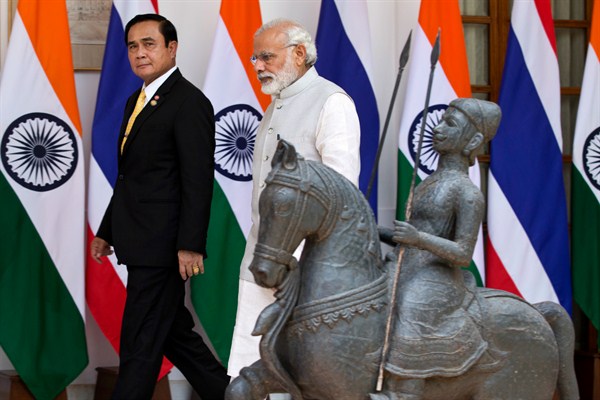Last month, the head of the Thai junta, Prayut Chan-o-cha, visited India for the first time since he seized power in a military coup in May 2014. Though India and Thailand have long been diplomatic partners, the visit saw an uptick in their cooperation as they prepare to commemorate the 70th anniversary of their relationship next year.
India and Thailand have long made a commitment to enhancing their bilateral ties, recognizing the value of the relationship both for its own sake as well as part of their regional strategies, whether India’s current “Look East” policy or its corollary, Thailand’s “Look West” policy in the 1990s. Both sides share things in common, from their Hindu-Buddhist historical and cultural heritage to a maritime space in the Andaman Sea. They see each other as a major economic market and an important partner in security issues, ranging from maritime security to counterterrorism.
That commitment has strengthened in recent years under Indian Prime Minister Narendra Modi and his counterpart, Prayut, due to the their respective priorities. For Modi, closer ties with Thailand can help boost India’s outreach to Southeast Asia and draw more investment into India, which he has made a key goal. For Prayut, closer relations with India help Thailand diversify its range of partners as part of a broader post-coup omnidirectional foreign policy, against the backdrop of democracy and human rights concerns from the West, as well as economic difficulties at home.

